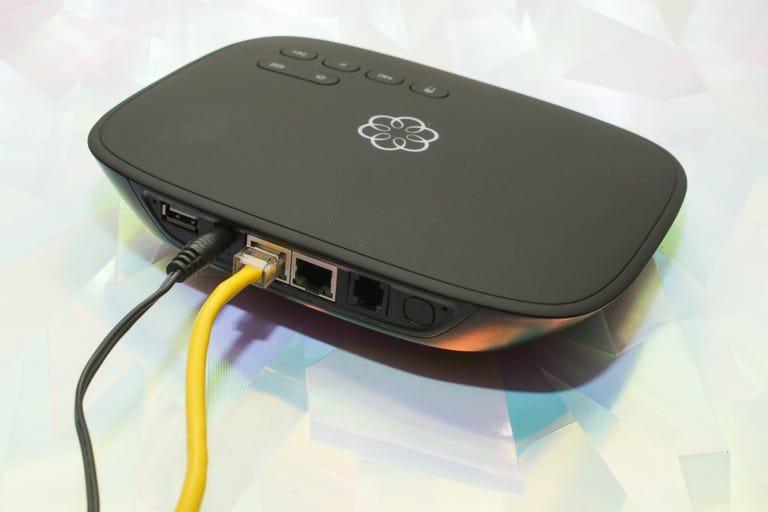 Why You Can Trust CNET
Why You Can Trust CNET Ooma Telo review: Ooma Telo will make you love your landline again
Forget your cable company's "triple play" phone plan. The Ooma Telo offers landline service over the internet for next to nothing.
Landlines aren't dead -- they're just the freebies that come with your cable TV and broadband internet now. (Yes, many so-called "triple play" services are actually cheaper than if you pass on the included phone service.) But going with a third-party provider instead of your cable company's default VoIP (voice over internet protocol) box can get you better hardware, better service and better options. That, essentially, is the pitch for the Ooma Telo.
The Good
The Bad
The Bottom Line
Like other VoIP services, the Telo plugs into your broadband router and routes your calls over the internet, which allows for updated features like HD Calling (better sound quality for voice calls). You can either port your existing phone number over to Ooma or get a new number from the company.
The first investment is in the box itself, which costs $100. (It's not supported outside the US and Canada, but if you plug it into a network anywhere in the world, it'll probably work -- albeit with a US number.) Then you'll have to choose between basic or premium service. The basic service is free, but you'll be stuck paying some state-imposed monthly fees. (It was $4 per month in New Jersey.) That gets you toll-free nationwide calling, call waiting, caller ID, 911 service, a call log history and voicemail. These last two can be accessed from Ooma's online dashboard.
Ooma also offers a premium service for $9.99 per month, which includes several additional features, including voicemail via email, call screening, do not disturb and call forwarding. You can forward calls to an Android phone or iPhone. Ooma's app is quite good and much more reliable than some other VoIP companions apps I've tried, such as the Invoxia Voice Bridge and MagicJack.
The setup for Ooma Telo was simple enough and took only 10 minutes. The only problem was Telo's wired-only configuration: you need to plug it directly into your router with an ethernet cable. (The Telo has two ports, so you can pass through to a second networked device if needed.) If you want Wi-Fi compatibility, you'll need to pay $50 extra for the Ooma Air, which includes a wireless USB dongle. Alternately, you can but the Telo bundled with Ooma's Bluetooth adapter to take calls directly on your mobile phone or hands-free wireless headset.
Once the Telo is on your network, you can either plug in any standard home telephone (including cordless models), or you can buy Ooma's own HD2 wireless handset, which runs about $60. Ooma also offers two other accessories of note:
- Ooma Linx ($50): A bridge device that lets the Ooma system interface with fax machines or cordless phones using the DECT 6.0 standard.
- Ooma Safety Phone ($50): A pendant-style wireless speakerphone intended to make easy call pickups or emergency calls for seniors.
Telo can also integrate with smart-home devices. It can pair with WeMo or Phillips Hue to have lights provide a visual alert when phone calls come in. Amazon Echo integration is here as well, allowing you dial out with your voice.
Ooma calls its transmission technology "PureVoice," and it delivered on its promise of combining better-than-traditional-landline sound quality with a mostly clean signal. (As with any network device, you need a solid broadband connection for Ooma to work effectively, of course.) Better yet, I didn't experience any dropped calls and forwarding calls to my mobile phone worked like a charm.
A superior internet phone system
All in all, I found Ooma to be far superior to MagicJack, and a better value than the Invoxia VoiceBridge (which is, admittedly, a more limited product focused simply on remote access to a US landline). If you're unhappy with the default "triple play" VOIP phone option from your cable company, or you're just looking for a standalone service with more flexible features, Ooma should be your go-to choice. The basic plan should be enough for most casual users, but if you're planning on making this your main phone line, the extra-cost premium plan is still less than a traditional landline from the phone company.



